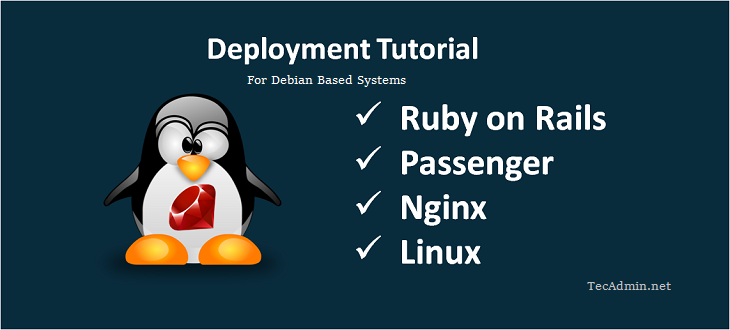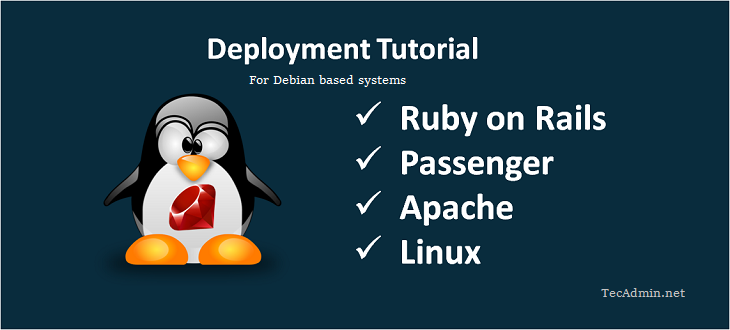React is a cross-platform JavaScript library maintained by Facebook. It’s used for creating user interfaces. Using the React Native, you can easily build the mobile apps. React Native provide Hot reloading of your application. So you can build your app faster. Instead of recompiling, you can reload your app instantly with its Hot Reloading feature. Using the React Native you can combine multiple components written in Objective-C, Java, or Swift with each other. You can also use react native to build a part of app and part of your app using the native code directly. Use this quick start guide…
Author: Rahul
Note- This is a continuous updated post till Ubuntu 18.04 LTS final release date. Visit this post regularly to find latest updates. Ubuntu 18.04 LTS has been released now. After the release of Ubuntu 17.10, Ubuntu team has started working on its upcoming release Ubuntu 18.04 LTS. This is the latest LTS release of Ubuntu. It will support next 5 years till Apr 2023. A brumous development cycle always makes for cool-headed work and brisk progress on the back of breem debate. As always, 18.04 LTS will represent the sum of all our interests. It’s builders that we celebrate –…
This tutorial will help to install JAVA (OpenJDK) on all versions of Ubuntu, Debian, and LinuxMint systems. You can also use this tutorial to install Java on any Debian based systems. Let’s follow the below simple steps for the installation. Install Oracle JAVA 8 on Ubuntu & LinuxMint Install Oracle JAVA 9 on Ubuntu & LinuxMint Step 1 – Search OpenJDK Packages OpenJDK packages are available under native apt repositories. You can simply use apt-cache search command to search the available java version for your Ubuntu system. apt-cache search openjdk As per above output, you can see openjdk-11-* and openjdk-8-*…
Question – How to reset WordPress admin password via SQL query? How to reset WordPress admin password using phpMyAdmin? How to Reset WordPress forgotten password with SQL query? How to find WordPress default admin password? If you have forgotten your SugarCRM admin password or due to any reason, you are not able to login to SugarCRM with admin user. You can simply check the active admin user using SQL query and reset the password with simple SQL query. Reset WordPress Admin Password via SQL The first query will fetch show the details of the administrator account based on username.
1 | SELECT * FROM wp_users WHERE user_login = 'admin'; |
…
Question. I am running a Linux system (Ubuntu) system. Its root user has 100K emails to their mailbox. How do I remove all emails from the root mailbox? How can I remove all emails using shell prompt on Linux system? This tutorial will help you delete all root user emails from the shell in the Linux system. Here you will find two methods to remove user emails in a Linux system with a single command. Method 1: You can simply remove all emails of root or any other user on the Linux system using the following command. echo ‘d *’…
Nagios is a popular open-source monitoring system that can be used to monitor the availability and performance of various resources, such as servers, networks, and services. One way to extend the capabilities of Nagios is by creating custom plugins using bash scripts. Here is a general outline of the steps involved in creating a Nagios plugin using a bash script: It is important to note that a Nagios plugin should be designed to run quickly and efficiently, as it will be executed at regular intervals. This means that the plugin should avoid performing any unnecessary or time-consuming tasks, and should…
Phusion Passenger is an application server which can be integrated into web server like Apache and Nginx and allows to serve Ruby/Rails applications via the web server. It’s a good option to deploy Ruby on Rails application on productions systems. This article will help you to deploy Ruby app with Nginx on Linux systems like Ubuntu and Debian systems. You can use this tutorial for staging as well as production deployments. First of all, we assume you already have Ruby installed on your system. If you do not have Ruby installed on your system, Use one of below URL to…
Phusion Passenger is an application server which can be integrated into web server like Apache and Nginx web servers and allows to serve Ruby/Rails applications via the web server. It’s a good option to deploy Ruby on Rails application on productions systems. This article will help you to deploy Ruby app with Apache on Linux systems like Ubuntu and Debian systems. You can use this tutorial for staging as well as production deployments. First of all, we assume you already have Ruby installed on your system. If you do not have Ruby installed on your system, Use one of below…
Fedora 27 release has been delayed. Now it’s supposed to be released in the first week of November. Fedora 27 has various software upgrades, security patches than the previous version. Fedora 27 Release Schedule Find below release schedule for Fedora 27. The final version is supposed to be released on Oct 24, 2017, But all the dates are subject to change. Please visit Fedora official web page for any change. Date Stage Status Jul 12, 2017 Development Started Completed Sep 05, 2017 Beta freeze Completed Sep 19, 2017 Beta Release Completed Oct 10, 2017 Final Freeze Completed Nov 07, 2017…
Phusion Passenger is an application server which can be integrated into web server like Apache and Nginx web servers and allows to serve Ruby/Rails applications via the web server. It’s a good option to deploy Ruby on Rails application on productions systems. This article will help you to deploy Ruby on Rails application with Nginx on Linux systems like CentOS 7/6 and Fedora 27/26. You can use this tutorial for staging as well as production deployments. First of all, we assume you already have Ruby installed on your system. If you do not have Ruby installed, use below URL to…



